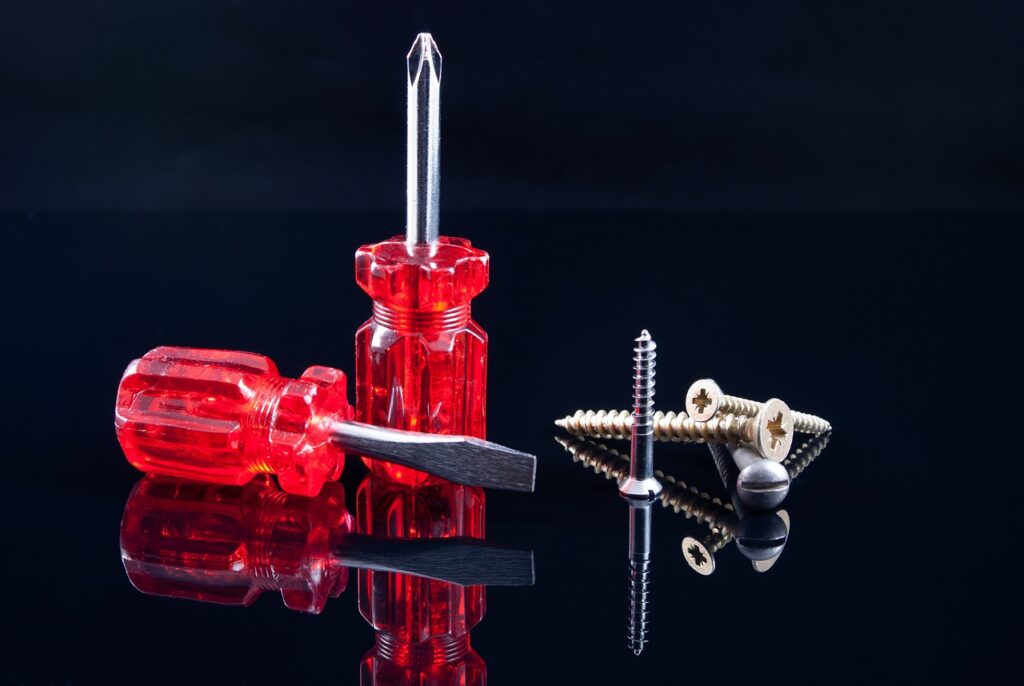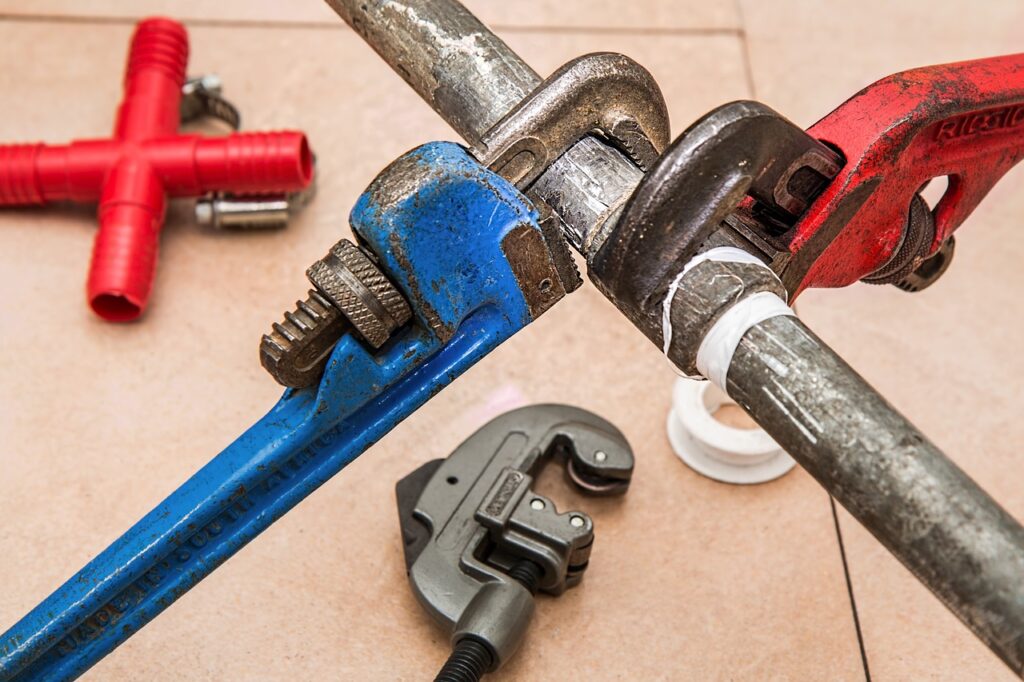“Acquiring Essential Tools for Basic Home Repairs” adopts a systematic exploration into the realm of home maintenance. By identifying the critical tools necessary for basic home repairs, the article empowers the reader to become their own handyman. It aims to furnish individuals with a practical understanding of common household repair issues, and the appropriate tools needed to address them. This comprehensive guide serves to equip its audience with knowledge that leads to self-reliance and economic efficiency.

Understanding the Importance of Basic Home Repair Tools
In the realm of homeownership, having a solid arsenal of basic repair tools at one’s disposal is pivotal. Far beyond simple convenience, owning the right instruments can prove vital when a minor mishap or home repair project comes up.
Why every homeowner should have basic repair tools
Every homeowner has encountered the need to make minor repairs or adjustments around their dwelling. Whether it’s tightening a loose screw or hanging up a picture, these tasks require the proper tools. Some might think that they can rely on professionals for every minor problem, but this is both impractical and expensive.
The benefits of do-it-yourself repairs
Doing home repairs can offer significant cost savings, especially for small tasks that do not warrant a call to a professional. The ability to manage minor repairs independently also helps homeowners understand their property better. Armed with the right tools and a little know-how, one can tackle a surprisingly wide array of tasks.
How having the right tools can save money in the long run
Investing in a quality set of basic tools might appear costly initially, but the long-term savings can be considerable. Instead of hiring professionals for minor repairs, homeowners can fix these problems themselves. Over time, the money that would have been paid toward these services can be saved, thus justifying the investment in tools.
Deciding on the Type of Toolkit to Acquire
Purchasing a toolkit is a decision that warrants careful thought, balancing factors like cost, quality, and individual needs.
New vs. used tool kits
While a new toolkit ensures unused tools and typically includes a warranty, they are often more expensive. Used toolkits, on the other hand, can provide substantial savings, but may not have the same guarantees or lifespan.
The difference between basic and advanced toolkits
Basic toolkits often provide the essentials one needs to tackle common household repairs and adjustments. Advanced toolkits, however, may include power tools and specialized equipment that cater to more complex projects. The decision between the two primarily depends on the homeowner’s comfort level with such tasks and the scope of the projects they undertake.
Choosing between individual tools and combo kits
While combo kits provide a variety of tools at a potentially lower price point, they may include items that homeowners don’t need. Purchasing individual tools allows one to customize their collection based on their specific needs, although this method might be costly in the longer term.
Evaluating quality and durability of tools
Always prioritize the quality of the tool over the price. Durable, well-made tools last longer and perform tasks more efficiently. This not only assures saved money in the long-run but also safety while conducting repairs.
Tools for Measuring and Leveling
Measurement and leveling tools are vital in the arsenal of any DIY enthusiast. They ensure that tasks are done accurately and professionally.
The importance of accurate measurements in home repairs
Accuracy in measurement is the cornerstone of any successful home repair task. Without accurate measurements, tasks like hanging pictures, installing cabinets, or even putting up wallpaper can end catastrophically.
Choosing a quality tape measure
A quality tape measure ensures accurate and reliable measurements. Look for one that is durable, easy to read, and has both metric and imperial measurements.
The various types of levels and their uses
Levels come in various types, including torpedo, beam, and laser levels. Beam and torpedo levels are ideal for ensuring a horizontal or vertical alignment, while laser levels project straight lines and are beneficial for tasks such as tiling or wallpapering.
When and why to use a square
A square is used to ensure corners and angles are at a precise right angle. This tool is vital when constructing furniture, installing cabinets, or laying tiles.
Hand Tools Every Homeowner Should Have
Hand tools make up the backbone of any homeowner toolkit. They are often reliable, easy to use, and require no power source.
The utility of a claw hammer
A claw hammer is arguably one of the most versatile tools a homeowner can possess. With its ability to drive in nails or remove them using its claw, it’s invaluable for a variety of tasks.
Why you need different types of screwdrivers
Different types of screwdrivers cater to different screws. Having a set ensures one can handle any screw they encounter. At minimum, a flat head and Phillips head screwdriver should be in every toolkit.
The many uses of an adjustable wrench
Adjustable wrenches, also referred to as crescent wrenches, can tighten or loosen various sizes of nuts and bolts, making them especially versatile and convenient to have on hand.
Pliers and their applications in home repairs
Pliers come in several types and are used to grip, bend, or cut wires. Needle-nose pliers are excellent for reaching narrow or obstructed areas, while combination pliers can cut, twist, or grip.

Power Tools Worth Investing In
When tackling larger projects, power tools can greatly increase the convenience and speed of completion
When a cordless drill becomes a necessity
A cordless drill is a versatile instrument that’s capable of driving screws and drilling holes. They are essential for tasks such as installing light fixtures, building furniture, or hanging shelves.
The benefits of owning a power saw
Power saws come in various forms tailored to different tasks. They save time and effort when cutting through materials like wood, metal, or plastic.
Distinguishing between different types of power tools and their uses
The world of power tools is varied, and the right equipment can depend on the nature of the project. Saws, drills, screwdrivers, sanders, and grinders all offer unique capabilities that can suit different tasks.
Safety considerations when using power tools
Power tools can pose considerable safety risks if not handled correctly. Proper usage involves understanding the tool’s operating instructions, wearing the appropriate protective equipment, and maintaining a focused, sober mindset when using them.
Essential Safety Equipment
Safety should never be compromised, especially when conducting home repairs that involve the use of tools.
Why personal protective equipment is important
Personal protective equipment (PPE) safeguards the user against hazards that may occur when conducting repairs. It is an essential preventive measure that could mean the difference between a successful repair or a disastrous accident.
Protecting your eyes with safety glasses
Safety glasses protect homeowners’ eyes from debris affecting visibility or causing injury. They are especially necessary when using power tools or dealing with volatile materials.
The role of gloves in home repair tasks
Gloves protect hands from cuts, scrapes, and other injuries that can occur during repair tasks. They can also provide better grip and control over tools, ensuring a more accurate and safer work process.
The importance of correct lifting and carrying techniques
Handling heavy tools or materials incorrectly could lead to strains or more severe injuries. Correct lifting and carrying techniques ensure a safer and more efficient work process.

Handling Materials and Fasteners
Understanding the intricacies of the many types of materials and fasteners can enable homeowners to make the right choice for a specific repair task.
Choosing the right nails and screws
Different lengths, diameters, and types of nails and screws serve unique purposes. The right choice depends on the specific task at hand, whether it’s hanging a picture or building a deck.
Understanding the various types of adhesives
There is a wide array of adhesives available, each with different strengths and suitable for different materials. Having a basic understanding enables the selection of the proper adhesive, ensuring stronger and long-lasting repairs.
The proper use of fasteners in home repairs
Using the correct fasteners in the right way is crucial to the longevity and stability of repairs. Ignoring this may mean the repair does not hold up, leading to more work and possible damage later.
Storing and organizing nails, screws, and other small items
Proper storage and organization of small items such as nails and screws can save a significant amount of time in future projects and repairs. It’s also safer, as it reduces the chances of these items causing accidents by being scattered around workspaces.
Maintaining and Cleaning Your Tools
Maintaining and cleaning tools is as important as having the right tools. Regular maintenance extends their lifespan and ensures they function properly when needed.
Why tool maintenance is essential
Just like any other asset, tools deteriorate over time. Regular maintenance keeps them functional and ensures they are ready to tackle tasks effectively whenever needed.
Cleaning tools after use
Cleaning tools after usage prevents the build-up of dirt or debris that could affect their performance. It also reduces the risk of rust and other types of damage.
Preventing rust and other damage
Proper storage and regular inspection can nip potentially damaging conditions like rusting in the bud. Using preventative measures like anti-rust spray can extend the lifespan of tools and keep them in good working order.
Safe storage of tools
Keeping tools in a safe, dry, and organized location prevents damage and prolongs their lifespan. It also ensures their availability when needed, and reduces the risk of accidents.
Training and Learning to Use Tools Properly
Having tools and understanding how to use them properly can make the difference between successfully completing a task or not.
Advantages of taking basic home repair classes
Home repair classes can provide hands-on experience and valuable information that can save money, prevent mistakes, and increase safety during projects.
Sources of information for DIY enthusiasts
Beyond classes, books, online tutorials, and forums provide a wealth of information for DIY enthusiasts. They provide guides, tips, and access to communities that can be incredibly beneficial.
The role of user manuals in tool safety and efficiency
User manuals provide specific information about the tools, including safety precautions and usage techniques to ensure maximum efficiency and minimum risk.
Practice makes perfect: getting comfortable with your tools
Comfortability with tools comes with repetition. The more a tool is used, the more experience the user gains, helping them to use the tool more efficiently and safely.
Advice for Buying Tools
Researching and understanding the pros and cons of different tools can lead to smarter buying decisions.
Deciding where to buy tools: online vs. in-store
Each platform possesses its advantages. Online offers convenience and often lower prices, while in-store allows you to physically handle and inspect the tool before purchase. The decision ultimately depends on individual preference and comfortability with online shopping.
Considering the advantages and disadvantages of used tools
Used tools can be an affordable way to secure high-quality equipment. However, they might lack warranties and could have been subjected to misuse or neglect from the previous owner.
Researching brands and reading customer reviews
A well-known brand does not always guarantee the best tool. Researching different brands and reading customer reviews can offer unbiased insights that guide a more informed decision.
Warranties and their role in your purchase decision
A warranty offers a safety net should the tool break or fail due to manufacturing defects. It also often reflects the manufacturer’s confidence in the tool’s quality and durability. Considering warranties in your decision can be greatly beneficial.










